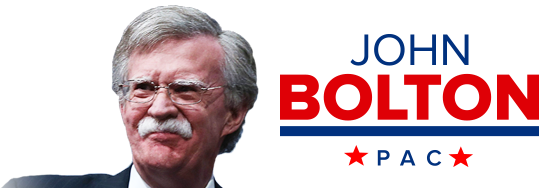Humiliation in international affairs comes in many forms, often unexpectedly. It buried President Joe Biden on Friday, piling mortification onto his administration’s foreign policy cowardice.
First, the White House effectively abandoned Israel by sponsoring a Security Council resolution calling for an “immediate and sustained cease-fire” in Gaza. Then, unforeseen Russian and Chinese vetoes, cast almost for the fun of it, slapped America in the face. U.S. media, unfamiliar with U.N. performance art, has not fully appreciated the extent of Friday’s diplomatic reverses, although Biden added to his own problems on Monday by not vetoing yet another anti-Israel cease-fire resolution.
After weeks of negotiating one textual retreat after another, the U.S. draft resolution’s final, critical language was that the Security Council “determines the imperative of an immediate and sustained ceasefire,” and that “towards that end, unequivocally supports ongoing international diplomatic efforts to secure such a ceasefire in connection with the release of all remaining hostages.”
Previously, Washington vetoed three proposals not directly linking a cease-fire to freeing hostages and because council action could have derailed talks to reach a hostages-for-ceasefire deal. Washington had also circulated draft resolutions embodying this linkage, thus differing significantly from what Moscow and Beijing vetoed. One prior text reportedly expressed council “support for a temporary ceasefire in Gaza as soon as practical, based on the formula of all hostages being released” and also “lifting all barriers to the provision of humanitarian assistance at scale” in Gaza. Importantly, these earlier U.S. drafts had also called for a cease-fire “as soon as practical,” a far cry from “immediate,” which is now a concession almost impossible to reverse.
This time, however, the White House itself disconnected hostages from the cease-fire, albeit ambiguously, in a vain effort to bridge what is for Israel (and should have been for Biden’s negotiators) an unbridgeable gap. So clear was the priority to get agreement regardless of cost that one American diplomat conceded on Thursday that the U.S. draft was written for other countries to “read into it what they need to” to support it.
This is the kind of weakness that invites humiliation, which is precisely what happened. Ironically, it was Russian U.N. Ambassador Vasily Nabenzia who understood the domestic U.S. politics behind Washington’s motivation. He called the text “a diluted formulation” aimed to “play to voters and throw them a bone in the form of some kind of a mention of a cease-fire in Gaza.”
Europeans quickly took credit for shifting the U.S. view, foreshadowing new resolutions even more at variance with the administration’s initial post-Oct. 7 approach. Belgian Prime Minister Alexander De Croo boasted, “gradually other countries joined our position and the fact that the U.S. have adopted [it] too played a part.” French President Emmanuel Macron was even more explicit about Washington’s shift: “What’s important to note is that the United States has changed its position, and shown its will to defend, very clearly now, a cease-fire. For a long time, the Americans were reticent. That reticence is now gone.”
Indeed, on Monday, the U.S. abstained on the latest anti-Israel resolution, thereby allowing its adoption by all 14 other Security Council members. So doing will only strain Washington-Jerusalem relations even further, to the disadvantage of both.
However, Israel’s next moves to finish off Hamas are the real issue. There, Friday brought Biden more humiliation. Meeting with Secretary of State Antony Blinken in Jerusalem, Israeli Prime Minister Bibi Netanyahu unreservedly rejected postponing or canceling Israeli military action. Acknowledging Biden’s earlier support, Netanyahu declared, “but I also told him that we don’t have a way to defeat Hamas without going into Rafah, and eliminating the remaining battalions there. And I told him that I hope that we will do it with America’s support, but if we need, we will do it alone.”
The critical question is whether Biden agrees that Israel’s legitimate right of self-defense includes its clearly-stated objective of eliminating Hamas’s military and political capabilities. Fully backed by Iran, Hamas has barbarically precipitated Gaza’s humanitarian crisis. Having endangered its own civilians, Hamas hopes to save itself from destruction by persuading others to prevent an Israeli victory. If Biden’s ongoing intellectual confusion prevails, enabling Hamas to assert such a “terrorist veto” over legitimate self-defense, Israel will be permanently weakened. So too will global anti-terrorism efforts, with fatal consequences for even more innocent victims. America should flatly reject the concept of a “terrorist veto.”
Biden’s declining support for Israeli self-defense is intimately tied to his failing effort (so far) to topple Netanyahu’s government. Ironically, hoping that ousting Netanyahu will solve the Israel “problem” reveals Biden’s fundamental misreading of Israeli politics, which are always complex, especially now. Whatever Netanyahu’s personal approval ratings, his war cabinet, which includes several prominent political rivals, faces no substantial dissent from its anti-Hamas military objectives. In fact, by attacking Netanyahu, Biden has likely strengthened him through a backlash against outside interference.
Israel’s attack on Hamas in Rafah could come at any moment, and victory there could be a decisive turning point in the struggle against the ultimate aggressor: Iran. This is not the time for the United States to show weakness, especially at the U.N.
Jerusalem is following Winston Churchill’s insight, “without victory, there is no survival.” Washington should concur.
John Bolton was national security adviser to President Trump from 2018 to 2019 and U.S. ambassador to the United Nations from 2005 to 2006. He held senior State Department posts in 1981-83, 1989-93 and 2001-2005.
This article was first published in The Hill on March 26, 2024. Click here to read the original article.


